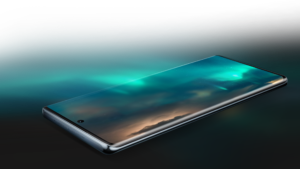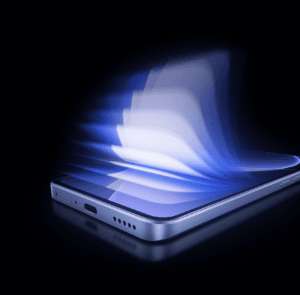Smartphones today feature a diverse range of display technologies, each designed to offer unique advantages and enhance the user experience. Here’s a closer look at some of the prominent display types:
LCD (Liquid Crystal Display):
- IPS LCD (In-Plane Switching): Commonly found in mid-range and budget smartphones, IPS LCD technology provides wider viewing angles and improved color accuracy compared to traditional TFT LCDs.
OLED (Organic Light-Emitting Diode):
- AMOLED (Active Matrix OLED): Renowned for its ability to deliver true blacks and vibrant colors, AMOLED displays feature individual pixels that emit light. This technology is often integrated into flagship smartphones.
- Super AMOLED: Taking AMOLED a step further, Super AMOLED incorporates touch sensors into the display itself, resulting in a thinner design and enhanced outdoor visibility.
Retina Display:
- Coined by Apple, Retina Display refers to a high-resolution screen where the pixel density is so high that individual pixels become indistinguishable to the human eye at a typical viewing distance.
MicroLED:
- Representing the cutting edge of display technology, MicroLED utilizes microscopic LEDs to form pixels. This promises improved energy efficiency, brightness, and a longer lifespan compared to traditional LED or OLED displays.
Notch and Punch-Hole Displays:
Waterfall Display:
- A visually striking design where the display edges curve beyond the sides of the device, creating a bezel-less and immersive visual experience. This design is often featured in flagship smartphones.
Dynamic AMOLED:
- Branded by Samsung, Dynamic AMOLED displays are characterized by dynamic color profiles, high contrast ratios, and support for High Dynamic Range (HDR). These displays are commonly found in Samsung’s premium Galaxy smartphones.

Refresh Rate:
- The refresh rate of a display, such as 120Hz or 144Hz, impacts the smoothness of animations and responsiveness. Higher refresh rates are particularly noticeable during gaming, providing a more fluid experience.
HDR (High Dynamic Range):
- HDR technology enhances the contrast and color range of a display, enabling it to reproduce a wider spectrum of colors and brighter highlights. This is crucial for an immersive multimedia experience.
True Tone Display:
- An Apple innovation, True Tone adjusts the color temperature of the display based on ambient lighting conditions. This feature aims to reduce eye strain and provide a more comfortable viewing experience.
Under-Display Cameras:
- This emerging technology integrates the front-facing camera beneath the display, eliminating the need for notches or punch-holes. While offering a cleaner design, early implementations may have slight compromises in image quality.
Foldable Displays:
- Found in foldable smartphones, these displays use flexible materials like plastic or ultra-thin glass, allowing the screen to fold. This innovative design provides users with a larger display that can be compacted for portability.
The world of smartphone displays continues to evolve rapidly, with manufacturers pushing the boundaries of technology to deliver more immersive, vibrant, and innovative visual experiences
People Also Ask :
- Different types of displays in mobile phones:
- LCD (Liquid Crystal Display)
- OLED (Organic Light Emitting Diode)
- AMOLED (Active Matrix Organic Light Emitting Diode)
- Super AMOLED
- Retina Display (Apple’s marketing term for high-resolution LCD)
- IPS (In-Plane Switching)
- Best display technology for phones: The “best” display technology depends on personal preferences and specific use cases. OLED and AMOLED screens are often praised for their vibrant colors, high contrast ratios, and power efficiency. Super AMOLED, a variation of AMOLED, is known for integrating the touch layer directly onto the screen, resulting in thinner and lighter displays.
- Six display technologies:
- LCD
- OLED
- AMOLED
- Super AMOLED
- Retina Display (high-resolution LCD)
- IPS
- AMOLED vs. Super AMOLED: Super AMOLED is a variation of AMOLED, and the main difference is the integration of the touch-sensitive layer directly into the screen in Super AMOLED displays. This integration can lead to thinner and lighter devices. In practical terms, Super AMOLED displays are considered an improvement over standard AMOLED displays.
- Most advanced display technology: As of my last knowledge update in January 2022, MicroLED technology is considered one of the most advanced display technologies. It offers benefits such as high brightness, energy efficiency, and the ability to create flexible and modular displays.
- Cheapest display technology: LCD (Liquid Crystal Display) technology is generally more cost-effective compared to OLED and its variants. However, advancements in manufacturing processes can affect the pricing of different display technologies over time.
- Four basic types of displays:
- LCD (Liquid Crystal Display)
- LED (Light Emitting Diode)
- OLED (Organic Light Emitting Diode)
- Plasma
- What is display technology? Display technology refers to the technology used to create and enhance the visual output on electronic devices, such as monitors, TVs, and mobile phones. It encompasses various technologies like LCD, OLED, and others, each with its unique features and characteristics.
- Best type of display: The “best” type of display depends on individual preferences and specific requirements. OLED and AMOLED displays are popular for their vibrant colors and high contrast ratios, while some users may prefer the natural color accuracy of high-quality LCD displays.
- Digital display technology: Digital display technology involves the use of electronic devices to show visual information, replacing traditional analog displays. This includes various technologies like LCD, LED, OLED, and others, which use digital signals to create images on screens






